Jerry Nelson

Puppeteer • Singer • Actor
Birth Date: July 10, 1934
Death Date: August 23, 2012 — 78 years old
Birth Place: Tulsa, Oklahoma
A key figure in Jim Henson's team of Muppeteers, Jerry Nelson delighted children for over four decades as such beloved characters as Count von Count, Sherlock Hemlock, The Amazing Mumford, Lew Zealand, Emmet Otter, and dozens of others in such critically acclaimed series and features as "Sesame Street" (PBS, 1969- ), "The Muppet Show" (ITV/syndicated, 1976-1981), "The Muppet Movie" (1979) and "Fraggle Rock" (HBO, 1983-87).
Nelson's versatile voice could give life to virtually any character, from the sweetly number-obsessed Count and the babbling, combative Two-Headed Monster, which he performed with frequent collaborator Richard Hunt, to a host of animals, humans, monsters and even inanimate objects, all of whom displayed unique personalities and impeccable comic timing. Nelson handled Muppets great and small to every Henson-produced project from "The Muppet Show" until 2002, when health complications forced him to scale back his involvement. However, he and his vast menagerie of characters remained not only television favorites but also lifelong friends to millions of children and adults, which was surely the highest compliment paid to a puppeteer.
Born July 10, 1934 in Tulsa, OK, Jerry Nelson received his first puppet, a marionette, when he was 12, and soon began experimenting with movement as well as various voices. His first break came in 1963 as a puppeteer for the legendary Bil Baird on a tour of New England. He later assisted Baird with a live show sponsored by Chrysler at the 1964 New York World's Fair. After serving in the U.S. Army, Nelson worked as a page for WRC-TV, Washington, D.C.'s NBC affiliate, where he frequently saw college freshman Jim Henson working on a five-minute puppet show called "Sam and Friends" (1955-1961), which featured an early version of Kermit the Frog.
When Henson took his creation - a puppet-marionette hybrid he dubbed "Muppets" - to New York City, Nelson decided to follow him, and after securing Baird's blessing, landed a job with Henson's company.
His first job with Henson was "The Jimmy Dean Show" (ABC, 1963-66), where he replaced Frank Oz in operating the right hand of Rowlf the Dog, a philosophical, piano-playing mutt who frequently conversed and sang with Dean. Henson's Muppets required two or more performers - one to manipulate the mouth and body, and others to coordinate hand movements and use props - and Oz's job was to help Henson give Rowlf the ability to play the piano, among other tasks.
When Oz received his draft notice, Nelson stepped in as Rowlf's right hand, but soon found himself out of a job when Oz was rejected by the draft board. Henson then assigned him to operate Rowlf for Dean's live shows around the country, and to assist in various commercials and variety show appearances throughout the 1960s.
In 1969, Nelson became one of Henson's key Muppeteers for "Sesame Street," for which he provided an astonishing number of characters, several of which transcended the program to become part of the pop culture lexicon. His best-known character was undoubtedly Count von Count, a Bela Lugosi-accented vampire with an abiding passion for numbers. Initially, Nelson played the character with a sinister edge, but as time passed and the Count became a favorite of children, he toned down the more villainous aspects of the Muppet, including a maniacal laugh that became the Count's signature stuttering chuckle ("Ah-ah-ah!").
Nelson's other "Sesame Street" characters included the strong but kind-hearted Herry Monster, know-it-all lecturer Herbert Birdsfoot, the hapless detective Sherlock Hemlock and the equally inept magician The Amazing Mumford, as well as lesser-known "Street" denizens like hippie singer Little Jerry and the easily frazzled Mr. Johnson, whose temper was frequently ignited by Grover. Initially, Nelson also operated and voice Mr. Snuffleupagus, but gave up his half of the ungainly, two-person costume in 1978 due to his multiple commitments on "Sesame Street" and the immensely popular "The Muppet Show."
Nelson also frequently teamed with Richard Hunt on several Muppet teams, including the verbose construction worker Biff and his silent partner, Sully. Their most famous creation was unquestionably the Two-Headed Monster, a scruffy, purple creature whose two heads issued unceasing torrents of babble while trying to cooperate on various tasks and ideas. The monster was inspired by Nelson and Hunt's own relationship, which had begun as mentor and novice, respectively, before blossoming into a close-knit partnership.
Between takes, the men joked that they were a two-headed monster, and Henson's creature workshop honored them with a beast they could simultaneously operate. His work in the early seasons of "Sesame Street" earned him shared Emmys with Hunt and the rest of the Henson team for Outstanding Individual Achievement in Children's Programming in 1974 and 1976.
While working on "Sesame Street," Nelson also collaborated with Henson on a number of network projects. He handled minor roles in "Hey, Cinderella!" (CBC, 1969/ABC, 1970), the first of three one-hour TV specials based on classic fairy tales under the umbrella title of "Tales from Muppetland." Nelson then graduated to the lead as Kermit the Frog's nephew, Robin, in "The Frog Prince" (syndicated, 1971), which also introduced the ogre Sweetums, a full-body character that Nelson frequently donned for "The Muppet Show."
He later handled several monstrous characters in a series of sketches for "Saturday Night Live" (NBC, 1975- ) set in a fantasy locale called the Land of Gorch. The sketches were the source of considerable friction between Henson's team and the "SNL" writing staff who despised the puppets, and were soon dropped from regular rotation.
In 1976, Nelson traveled to England to film the first of five seasons of "The Muppet Show," Henson's universally acclaimed variety series set amidst the backstage shenanigans at a theater run by Muppets. The show allowed him to create a whole new series of enduring characters, including the addled vaudeville comedian Lew Zealand, whose act consisted of boomerang fish; Dr. Julius Strangepork, the porcine science officer in the "Pigs in Space" sketches; Electric Mayhem bassist Floyd Pepper, whom Nelson played as a tribute to singer Leon Redbone; and Crazy Harry, the show's resident pyrotechnic expert. A talented singer and musician, Nelson was now provided with a regular showcase for his vocal abilities, whether as Floyd, Robin or a "one-shot" Muppet like the creature caught in a tornado while warbling "The Windmills of Your Mind."
While working on "The Muppet Show," Nelson also received top billing in Henson's wistful special "Emmet Otter's Jug-Band Christmas" (HBO, 1977), a gentle fable about a young otter (Nelson) who sought to win a talent contest to buy a Christmas gift for his mother. The special became a holiday favorite, and one of Nelson's favorite roles, due to the lovely songbook by Paul Williams. "The Muppet Show" also brought Nelson his third shared Emmy in 1976 for Outstanding Comedy-Variety or Musical Series.
When "The Muppet Show" drew to a close, Nelson was among the main players in Henson's subsequent efforts. He naturally reprised many of his "Muppet Show" characters for the beloved feature "The Muppet Movie" (1979), and its follow-up, "The Great Muppet Caper" (1981). The latter featured a brief cameo by Nelson himself alongside his daughter, Christine, who had been diagnosed with cystic fibrosis. Henson gave her the brief speaking part so that she could join the actors' union and take advantage of their health plan. Sadly, Christine died before the film was released.
Though grief-stricken, Nelson kept busy with Henson projects. He operated Gobo, the leader of the diminutive but industrious Fraggles on "Fraggle Rock" (HBO, 1983-87), and lent his voice to the monstrous Skeksis Emperor and Skeksis High Priest in Henson's ambitious feature "The Dark Crystal" (1982). In 1984, he returned for "The Muppets Take Manhattan" (1984), which also featured a cameo by The Count, and essayed all of his main "Sesame Street" characters for the big screen feature "Follow That Bird" (1985).
Just two years after Nelson's benefactor Henson succumbed to a severe bacterial infection, shocking the world by dying at age 53, in 1992, Richard Hunt died of complications from AIDS, robbing Nelson of his longest and closest performing partner. Again, Nelson found solace in his work, which included the voice of the genial Ghost of Christmas Present in "The Muppet Christmas Carol" (1992) and an appearance in human guise in "Muppet Treasure Island" (1996). He took over as the voice of the crotchety balcony heckler Statler, whom Hunt had played throughout the history of "The Muppet Show," for "Muppets Tonight" (ABC, 1996-98), as well as several minor characters.
In 2001, Nelson began to turn over many of his Muppet characters to newer performers. In 2004, he confirmed long-standing rumors that health issues, including complications from chronic obstructive pulmonary disease and prostate cancer had forced him to limit his day-to-day involvement with the Muppet franchise. However, he held on to his signature "Sesame Street" characters, and continued to provide the voice of the Count and Amazing Mumford, with puppeteer Matt Vogel handling the character manipulation. In 2009, he released an independent record of original songs, titled Truro Daydreams.
Fans young and old were saddened on Aug. 24, 2012, when it was announced that Nelson had died of unspecified causes. Jerry Nelson was 78.
By Paul Gaita
Credits

Sesame Street: We All Sing Together

I Am Big Bird: The Caroll Spinney Story
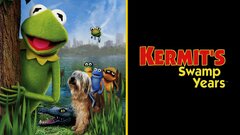
Kermit's Swamp YearsStream

Elmo's World
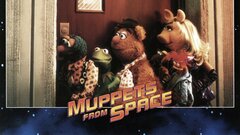
Muppets From SpaceStream
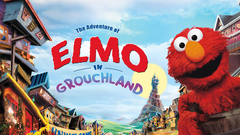
The Adventures of Elmo in GrouchlandStream
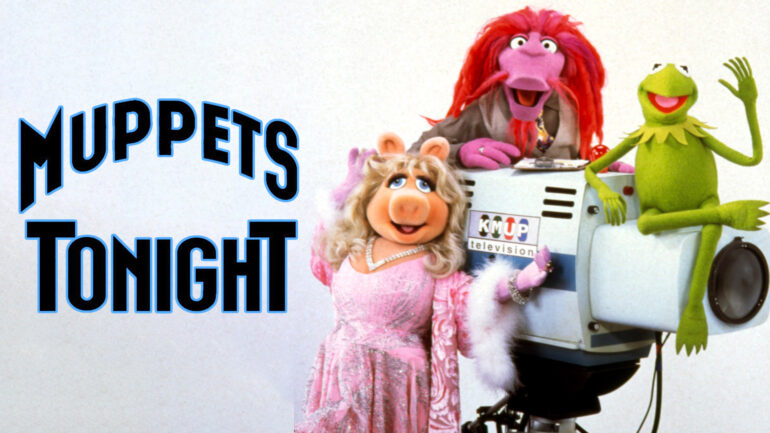
Muppets Tonight
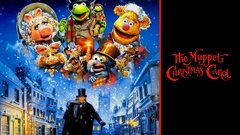
The Muppet Christmas CarolStream

The Radicals

Lighthouse Island

Dog City: The Movie

Song of the Cloud Forest

The Christmas Toy
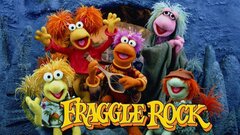
Fraggle RockStream

Big Bird in China
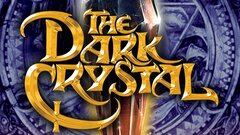
The Dark CrystalStream
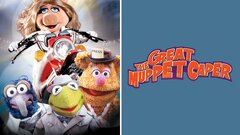
The Great Muppet CaperStream
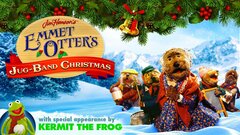
Emmet Otter's Jug-Band ChristmasStream
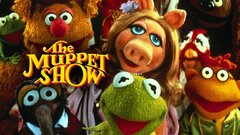
The Muppet ShowStream

Plaza Sésamo

Plaza Sésamo

Sesame Street Playlist
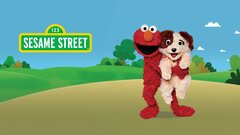
Sesame StreetStream

Sesame StreetStream

Sesame StreetStream





